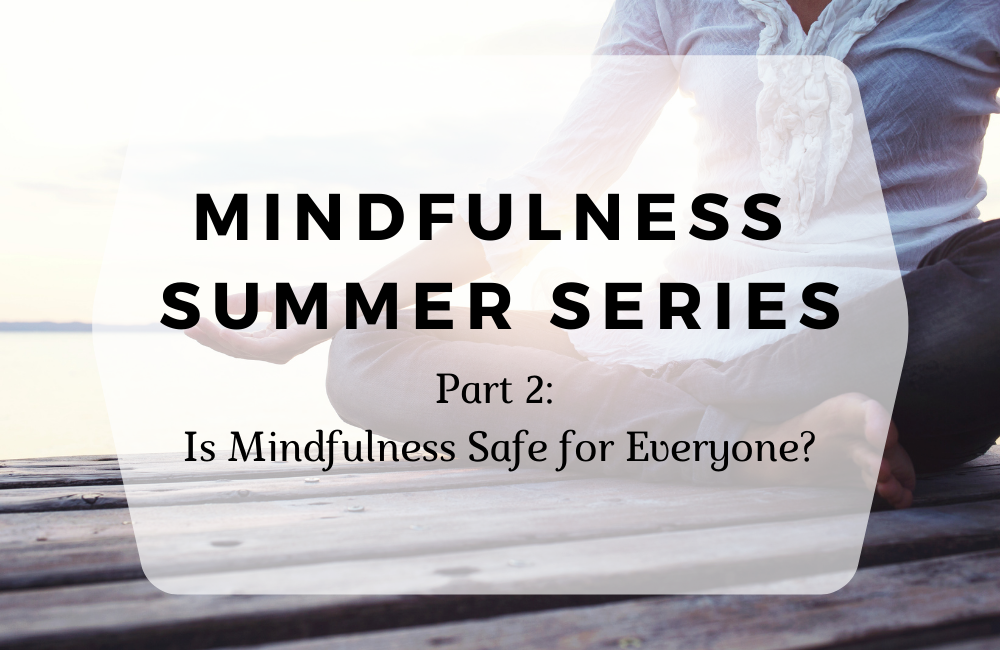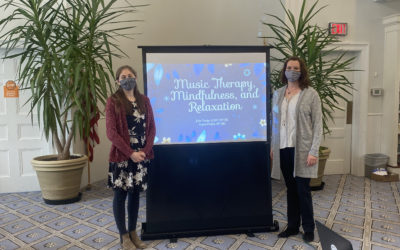In Part 1 of our Summer 2021 Mindfulness Blog Series, we learned what Mindfulness is and is not. We also answered the question about its link to religion. We encourage you to read all the blogs within the series for a comprehensive understanding.
Today we would like to focus on the question of, Is mindfulness a safe practice for everyone? It certainly appears on the surface that mindfulness would be a safe exercise to learn and for many individuals it is, however, there are some important considerations. Below we will explore the first three of six, in hopes of learning the best way to practice mindfulness and whether further thought should be explored before jumping into using it.
A clear definition of mindfulness should be understood.
- Before practicing any new exercises, it is always a wise choice to fully understand what is involved. If you are learning from a life coach, mental health therapist, or yoga instructor there is usually a discussion and confirmation that the individual understands and would like to learn mindfulness. Always ask for clarity if it is not shared.
- On the other hand, there are circumstances in which individuals, including our youth, who find themselves in a scholastic or community group where it is presented without a great deal of explanation or opportunity for having questions answered. And in some cases, there is no way for the individual to opt out. This can cause some unintentional harm to a participant, so should be seriously considered prior to introducing mindfulness.
Meditation is NOT the only way to present mindfulness.
- Because meditation is one of the first things that comes to a person’s mind when they hear mindfulness, they may not be willing to try this practice. Although meditation can be a very helpful mindfulness tool, some individuals will reject the concept of mindfulness all together if they think meditation is required.
- Closing eyes is not a necessity when practicing mindfulness. If an individual is resistant to closing their eyes during meditation or another mindfulness exercise that is perfectly fine. Focal points within a room or a favorite drawing or photo is a great way to focus the mind and eliminate visual distractions.
The person helping you to learn mindfulness should be practicing it as well.
- When learning mindfulness from another individual it is a very appropriate question to ask if they are practicing mindfulness. It is very important to have experienced the feelings and challenges that go along with perfecting the skill of mindfulness. If the leader is not doing so on a regular basis, they will have trouble guiding others.
- An effective mindfulness leader will acknowledge that there are many ways to practice mindfulness and guide each person into a specialized plan that will allow them to be successful.
We hope you will join us in the coming weeks for Part 3 of our Summer 2021 Mindfulness Blog Series, where will highlight the last three considerations to insure safe mindfulness practice.
Nature’s Instruments: Making Music Outside
Spring is finally here! The daffodils are blooming, the Easter bunny made his visits, and families are itching to get out of the house. In the spring, the outside world is full of sounds.
Current Events: Thrive to Survive Workshop
Written by Katie Pistilli, MT-BC This month, Upstate Music Therapy Center employees Erin Triola, LCAT, MT-BC and Katie Pistilli, MT-BC met a wonderful group of people through the Thrive to Survive support group. Katie and Erin conducted a workshop for Thrive to...
Parenting: Finding Calm in the Chaos (Part 2)
Understanding ourselves, why we respond the way we do, can greatly improve our parenting approach
and by doing so increase healthy and helpful interactions with our children. When this happens both
the parents, children, and spousal relationship begin to notice a sense of calm even during the expected
chaotic moments in day-to-day child rearing.




